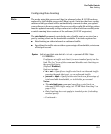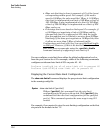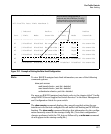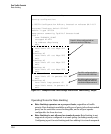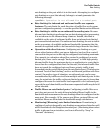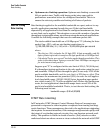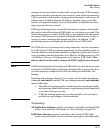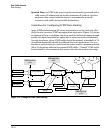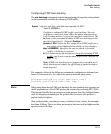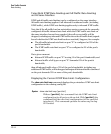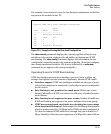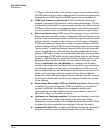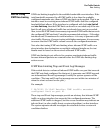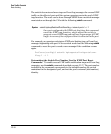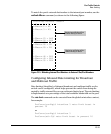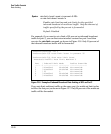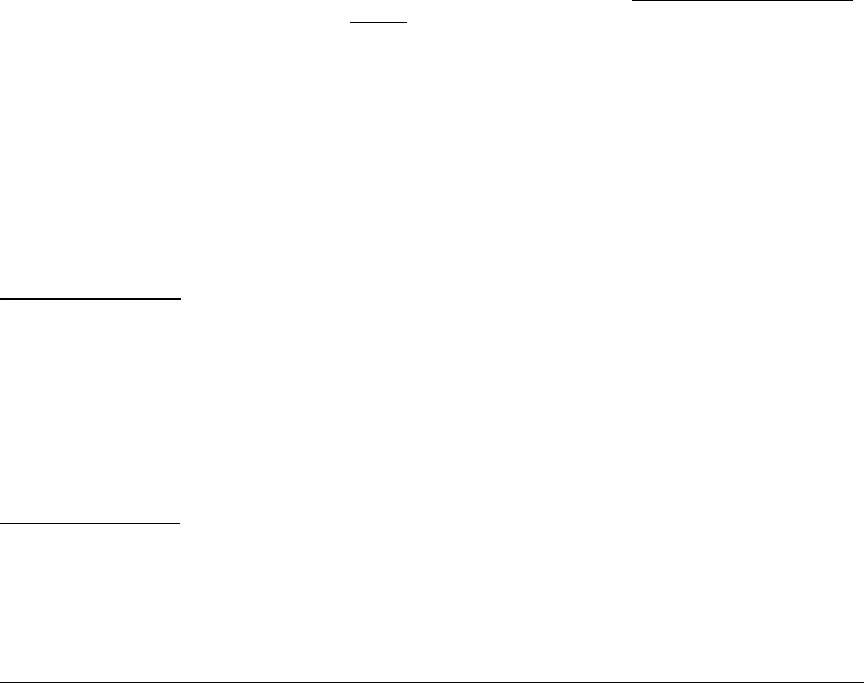
Port Traffic Controls
Rate-Limiting
Configuring ICMP Rate-Limiting
The rate-limit icmp command controls inbound usage of a port by setting a limit
on the bandwidth available for inbound ICMP traffic.
Syntax: [no] int < port- list > rate-limit icmp <percent < 0-100 > |
kbps <0-10000000>>
Configures inbound ICMP traffic rate limiting. You can
configure a rate limit from either the global configuration
level (as shown above) or from the interface context level. The
no form of the command disables ICMP rate-limiting on the
specified interface(s). (Default: Disabled.)
percent <1-100>: Values in this range allow ICMP traffic as a
percentage of the bandwidth available on the interface.
kbps <0-10000000>: Specifies the rate at which to forward
traffic in kilobits per second.
0: This value causes an interface to drop all incoming ICMP
traffic, and is not recommended. Refer to the Caution on
page 13-11.
Note: ICMP rate-limiting is not supported on meshed ports.
(Rate-limiting can reduce the efficiency of paths through a
mesh domain).
For example, either of the following commands configures an inbound rate
limit of 1% on ports A3 - A5, which are used as network edge ports:
ProCurve(config)# int a3-a5 rate-limit icmp 1
ProCurve (eth-A3-A5)# rate-limit icmp 1
Note When using kbps-mode ICMP rate-limiting, the rate-limiting only operates on
the IP payload part of the ICMP packet (as required by metering RFC 2698).
This means that effective metering is at a rate greater than the configured rate,
with the disparity increasing as the packet size decreases (the packet to
payload ratio is higher).
Also, in kbps mode, metering accuracy is limited at low values, for example,
less than 45 Kbps. This is to allow metering to function well at higher media
speeds such as 10 Gbps.
13-13



